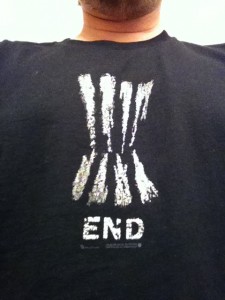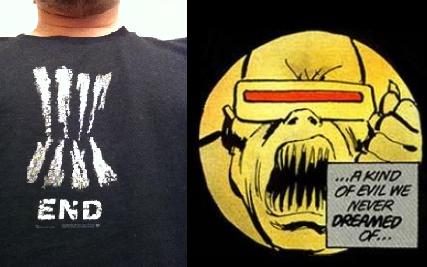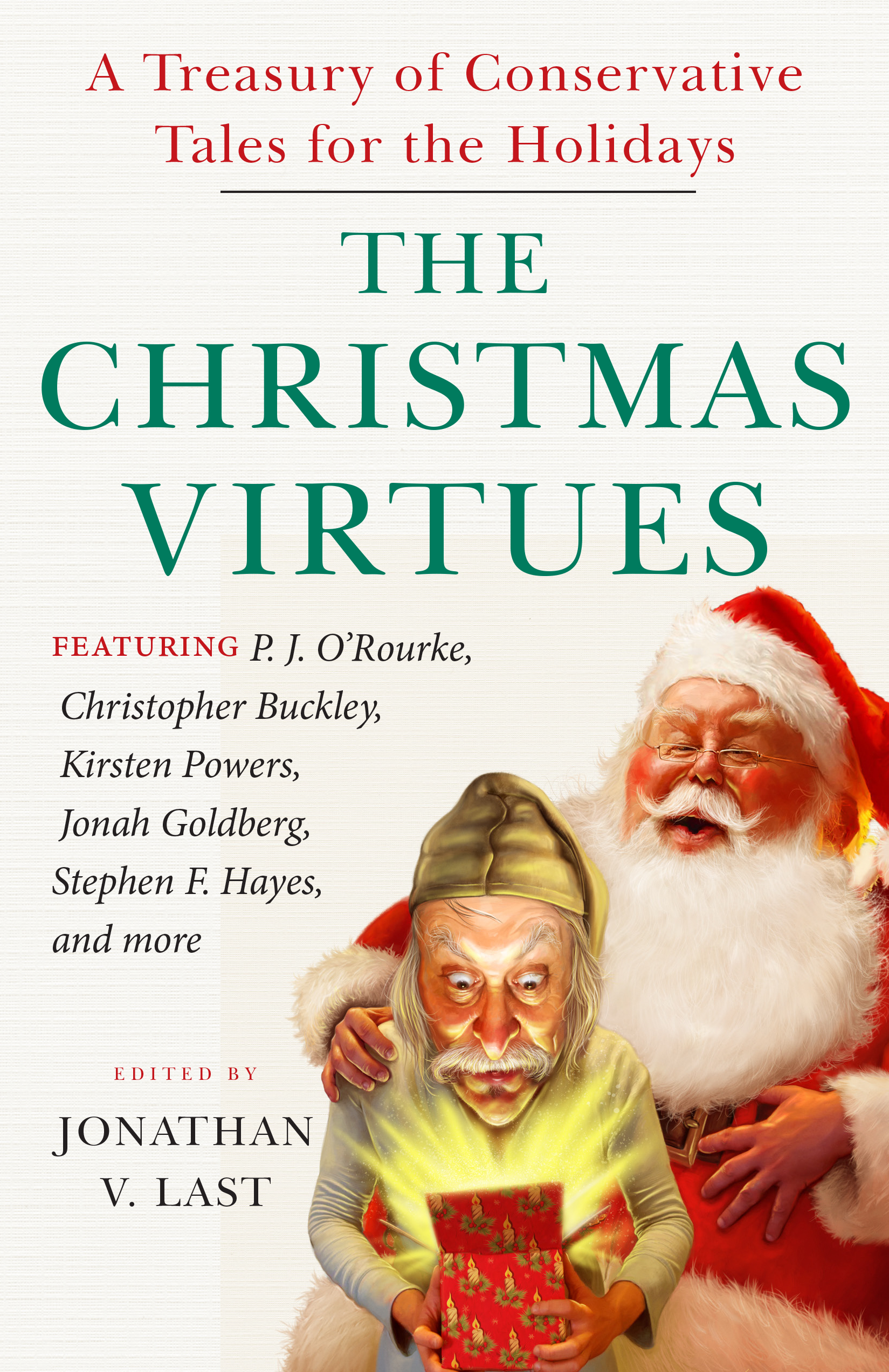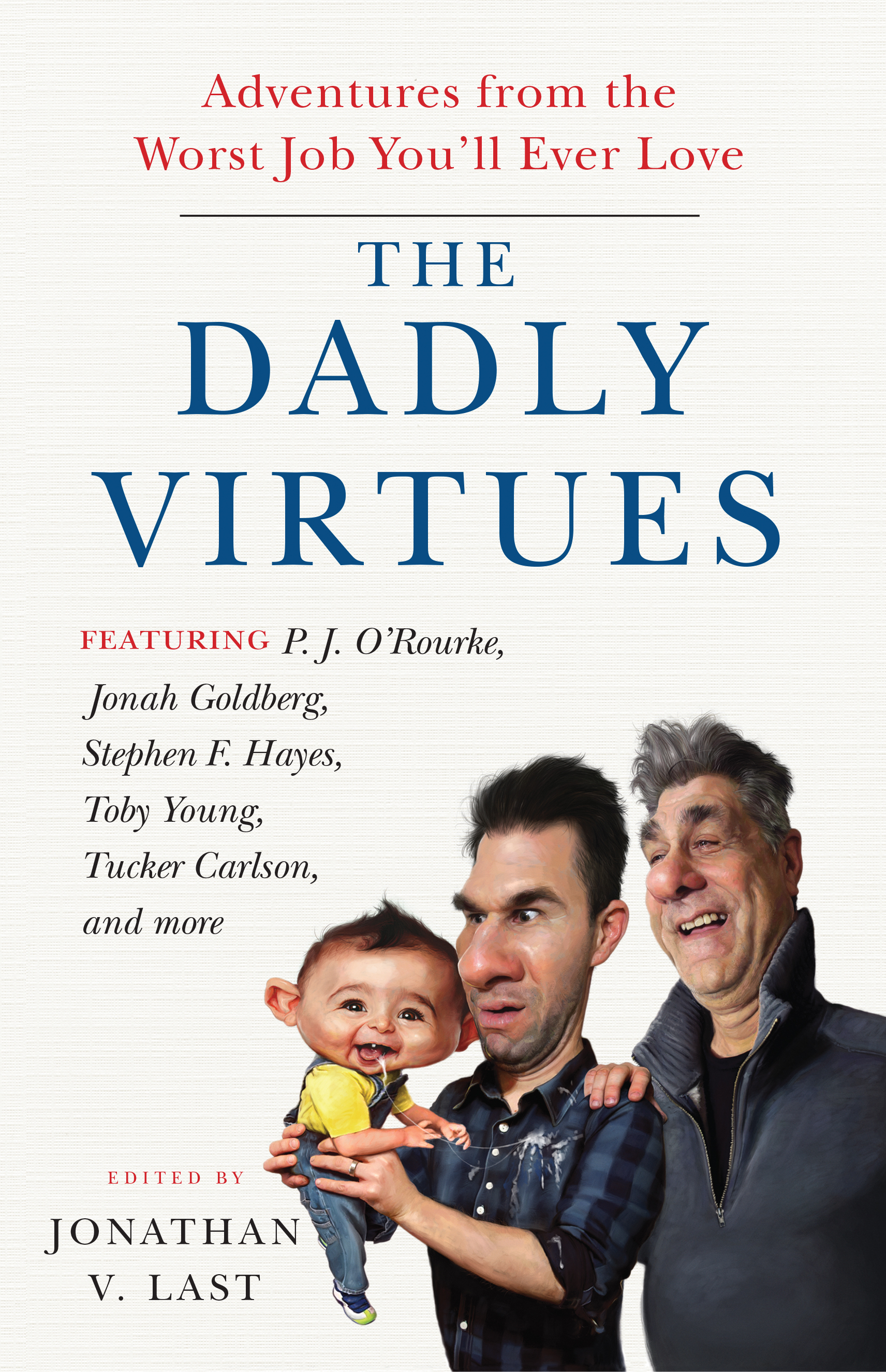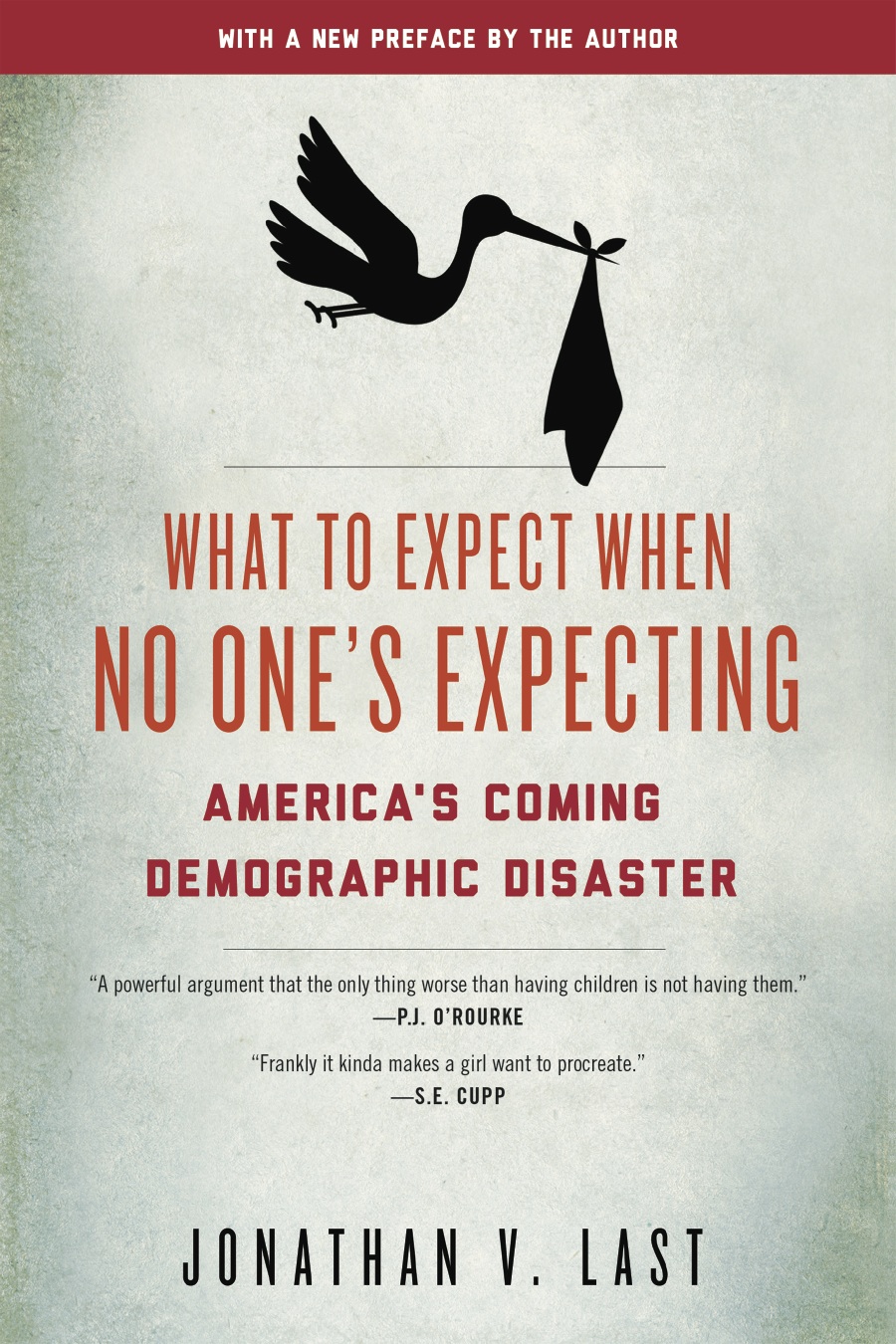December 21st, 2011
In regards to my post about Miller and Nolan, Santino and I were chatting and he picked up on something which I had noticed, but didn’t want to say out-loud. I’ll let him explain it in his own words:
So. Theory.
At the prologue screening, we got a t-shirt. It looks like this:Now, this is a kind of stylized take on the Bane mask in Nolan’s movie. (They also had a stylized take on the Batman logo; I didn’t get that one.) But it reminded me of something else. I was thinking, thinking, let it go, got back to thinking … and then it hit me:That’s not the best image from the book, but it’s the best one I found on Google Image. (I think the image that it most resembles is about midway down page 99 of the 10th anniversary paperback edition of The Dark Knight Returns.) Point is: It looks like the mutant leader.So let’s consider what we know:
- TDKR is set some years (8?) after the events of TDK.
- Bane is able to command a mob to fight with cops or Batman or both (I don’t remember that happening in Knightfall; I do remember it happening in The Dark Knight Returns).
- According to the trailer, it’s “peacetime” in Gotham. I assume if the cops aren’t busy, Batman probably isn’t either. Is he officially out of commission? Possibly because of a law passed in the wake of the death of Harvey Dent? Or because he’s pacified the city?
So here’s my theory: What if the Bane of TDKR is really more of a Bane/Mutant Leader hybrid? Someone who incites the 99 percent to tear the city down from the inside? And what if Batman rising is him taking control of that mob (like, say, at the end of the The Dark Knight Returns)? That means the “big idea” of the TDKR is…..the need of an enlightened 1 percent to lead the 99 percent? Something along those lines?
More Dark Knight Rises
December 21st, 2011
I’m glad to see that someone else has done a frame-by-frame review of the DKR trailer. In so doing, Gamma Squad makes a really, really awesome catch: The pearl necklace Selina Kyle tries on is the pearl necklace from Crime Alley.
In all the run up to DKR, it never occurred to me that Nolan might use Selina Kyle as an actual villain.
Hotness.
1 commentDark Knight. Nolan. Miller.
December 20th, 2011
For no particular reason I’ve been re-reading Frank Miller’s Batman stuff–Year One, his Christmas one-shot, and Dark Knight Returns. A couple thoughts occur to me:
1) What none of the Nancy’s reading Frank Miller out of the comics A-list last month bothered to do was grapple with this: His writing in Year One and Dark Knight Returns is probably the the signal achievement in comics since Schuster and Siegel decided to come up with an all-powerful super man. Miller’s writing is breathtakingly confident, beautifully lean, honed to within an inch of its life. Go back and look at some of those pages and you’ll be blown away by how wonderfully they hold up. But they weren’t just the best pair of books in the history of the medium–they were the most influential, too. It is impossible to conceive of what the world of comics would look like today without them.
2) One of the interesting aspects of Nolan’s Batman movies is how he takes bits and pieces of comics and uses them in the construction of his own ideas. His Joker was taken from Brian Azzarello, for instance. He takes the final moment of Batman Begins from the last page of Miller’s Year One. There’s a shot in the new Dark Knight Rises trailer from Knightfall. He’s really mined the source material, but in the very best sense. Because he’s not recycling them–he’s using them to explore his own Big Ideas.
3) So what’s the Big Idea in DKR? That’s what I’m most interested in and I’m guessing we can find out once we know the answer to the following question: What does Bane want?
But in the meantime, I’ll hazard a guess. TDK was a movie about the liberal order, and what happens when it encounters an illiberal threat from the outside. I wonder if the Occupy Wall Street theme shown in the new trailer, and Bane’s talk about “the fire” rising, means that Dark Knight Rises will be about the liberal order confronting an illiberal threat from within.
4 commentsDark Knight Rises–Full Theatrical Trailer
December 19th, 2011
There’s a lot to chew on here.
The first thing that jumps out at me is that (a) Anne Hathaway has a nicely delivered monologue and (b) If what she’s saying is any indication, there’s an Occupy Wall Street-ish kind of aspect to DKR, with Nolan not necessarily on the side of the OWSers.
The second is that Nolan seems to want DKR to be, like TDK, a movie of ideas. Which is pretty grand.
I’m going to have to watch it a few more times to really grok the rest.
PS: Since I’m basically switching to Dark Knight Rises blogging from here until July 2012, here’s Santino–he’s back!–writing with some worries about the 6 minute prologue running in from of Mission Impossible: Ghost Protocol.
4 commentsDie, Dark Knight, Die?
December 1st, 2011
Galley Friend B.W. sends along this totally intriguing little essay suggesting that Chris Nolan must kill Bruce Wayne at the end of Dark Knight Rises. It reminds me of the literary alchemy debates whirling around the final Harry Potter book. I’m not sure I’m convinced at the idea that Nolan is making dual trilogies, but I think it’s nearly accepted wisdom that he likes to structure his films like magic tricks. (Sorry, illusions. A trick is something a whore does for money. Or candy.)
The Joseph Gordon-Levitt angle feels completely plausible.
9 commentsDC and the New 52
November 16th, 2011
I’ve been reasonably critical of DC’s company-wide relaunch, but three months in I’m softening slightly. For all the stuff DC has done wrong here, they’ve also done a few things right.
1 comment* The Detective Comics Batman is pretty interesting. Very much an old-school Batman story with roots in the kind of Strange Tales horror stories we had before the Comics Code. I continue to enjoy Wonder Woman, which gives us an entirely new–and altogether superior–version of the character, rooted in Greek mythology. And I’ve even fallen a little bit for Gail Simone’s Batgirl. As much as I liked Barbara Gordon’s Oracle, as Batgirl again she’s definitely a fourth-tier hero. And it’s kind of charming. She’s a little like the goody-goody version of Jessica Jones: always a step behind, slightly crippled by self-doubt. But clever, in her own way.
* I don’t actually like Grant Morrison’s Action Comics. Or the new Justice League. But I haven’t jumped ship on them. Yet.
* The single smartest thing about the new DC universe is that it does not appear to be a coherent universe. So far as I can tell, there’s no character continuity. Not just in events, but even in how they’re written. The Batman of Justice League is tonally very different from the Batman of Detective Comics, who is almost a different character than the Batman in the plain-vanilla Batman title. A Darkseid invasion in one book does not seem to have bearing on stories in any of the other books.
What this does is free up the writers to simply tell stories. Detailed continuity has really crippled both Marvel and DC over the last couple decades–especially when it comes to the yearly event books, which then push their tendrils into the publishers’ full line, interrupting normal storytelling and forcing the entire company to deal with the same central topic. It’s not an accident that over the last 10 years or so, some of the best storytelling from the two big houses has come in runs that were deliberately out-of-continuity: The early Ultimate books; Alias; Gotham Central; The New Frontier; Wonder Woman: Hiketeia, Joker.
I’m not sure DC had to reboot it’s entire line to do escape the narrative confines of continuity, but it’s probably good that they did, whatever the route they took.
* At the end of the day, no matter now much I’ve complained about the New 52, the central fact is this: After three months, I’m following maybe a half-dozen DC books. In the three years prior to the relaunch, that number was a consistent zero.
The New DC
October 7th, 2011
After all of my railing against the DC re-launch, I still picked up a bunch of the issues. Because I love comics. Because I love the characters. And because, above all else, I’m a sucker. And like all suckers, I want to be had.
And there are two of the new books that I kind of liked. Brian Azzarello and Cliff Chiang’s Wonder Woman is interesting. It treats WW more like Solomon Kane than a member of the DC trinity; that’s a neat choice. The art is really confident. It’s the only one of the DC books I bought which draws females in anything approaching semi-realistic proportions. (Every other woman in every other book looks like a Vivid girl.) One small side note: Azzarello and Chiang have decided to make WW into an actual Amazon. There’s a panel where she’s standing side-by-side with a normal woman and it’s clear that Princess Diana probably goes 6’8″. I don’t think I’ve ever seen her drawn that way.
Batman, which is one of the three or four Batman books is okay. Intriguing enough to warrant a look at the next issue, anyway.
The rest of the stuff I picked up is, frankly, embarrassing. Not just because the stories are non-existent. Or the characters are bastardized to the point of making them unintelligible. But because even on these all-important first issues, the art–the easiest part of the equation to control–is often incoherent.
For Exhibit A, I’d like to introduce the final splash-page of Catwoman #1. This is a pretty important page, from DC’s stand-point, because it shows Catwoman mounting Batman in the culmination of their penthouse tryst. Because it’s sensational, and it shows on-screen sex between two franchise characters, DC knew that people would talk about this page. Here it is:
Leave aside the character implications of this choice. (Though I’d argue that they’re significant: Combined with the foreplay in the preceding pages, it turns Batman from a secular monk into a needy, emo player. I don’t mind sex in comics. But the Batman does not have time for sex. That’s not who he is.) Look at the picture. Now look at Batman’s exposed midsection. What muscle group is that rippling across his abdomen?
That’s a trick question, of course. It’s not a realistically drawn muscle group. It’s just a bunch of lazy line strokes. Might as well be Killer Croc’s belly. Now, look down a bit at Catwoman’s bare foot. And tell me this: How in the world is her right foot, which is wrapped around Batman’s back, in the position it’s in, with its sole facing the viewer? This is anatomically impossible.
Look, these are absolutely nits that I’m picking. But my point is that this is one of the five or ten most important pages in DC’s entire new launch, a project on which they’ve bet the company. And on a page with that much importance, they couldn’t even be bothered to make sure the art was coherent. They just slapped it on. You can practically hear DiDio thinking, Eh. Who cares? They’re totally doing it!
The sales have been great for DC so far. But I’ll be shocked if, 12 months from now, at least half of these books aren’t facing cancellation. This experiment has the look of disaster about it.
Update: If you care at all about any of this, please, I beg you, go read this Insanely Awesome essay about the Batman-Catwoman sex scene. Sample awesome:
Question One. When Catwoman says “Still… it doesn’t take long…“, what does that line mean exactly? Is she… Is she implying that The Batman orgasms really fast, like right away, like maybe even in his bat-underwear?
I don’t know– on the one hand, I’d like to think that The Batman would have more control than that because … because he’s super-aware of his body or he has super-discipline over his body, after being trained by ninjas and Liam Neeson.
On the other hand, The Batman’s a regular guy and maybe we should all accept that, you know, that’s a thing that happens to regular guys, especially if they’ve had a couple Zima’s, and they’re young and they’re not really sure what’s going on, and they don’t really like the Daves Matthews Band but one of their songs is playing and why am I crying?
There is more. So much more. I will leave the best line below, in Invisotext. Just in case you feel compelled to cheat:
5 commentsIs it that fans want The Batman to, like, punish crime with his cock?
Dept. of Dress Codes
August 7th, 2011
Wait–so Christopher Nolan directs in a blue blazer and khakis?
That is awesome.
1 commentX-Men First Class: The Temptation of Mystique
June 20th, 2011
Amazingly enough, I saw X-Men: First Class yesterday and, like everyone else, liked it quite a bit. It’s not Matthew Vaughn’s best movie, or the best comic-book movie, but it ranks pretty high on the list and was, by most any standard, an enormous amount of fun. Some thoughts:
* Henry Jackman’s score had an eerily similar feel to the score in Layer Cake. It was great; catchy and interesting.
* Also great: Any time Michael Ironside appears. But for some reason he was credited as “M. Ironside”. Wonder why.
* Has Kevin Bacon ever been more fun? Not that I can think of off the top of my head. He was fabulous.
* Yes, Michael Fassbender should take over the Bond mantle as soon as Daniel Craig is ready to move on. It’s funny: In Layer Cake, Vaughn included a little moment of Craig moving around a corner with a handgun almost as an overt audition for the role. And he does the same for Fassbender here, especially in the bar in Argentina.
* A point made by Galley Friend Mike Russell: To get a PG-13, you can only use the word “fuck” once. This was the single greatest MPAA-targeted use of the word in the history of film.
* Vaughn did lots of things right, but the biggest was the skill in sketching characters in just enough detail that the movie could be both ensemble and character-driven. He balanced spending the right amount of time with each. That can’t have been easy.
* Now a longer point: I’d argue that X-Men: First Class is really about Mystique. Charles and Erik are the two poles of the film, each making a slightly-complicated moral argument. Their dialogues are pitched exactly to Mystique, who is the archetype of the mutant every-girl. She is the movie’s heart: Winning us over when we first meet her as a scared and hungry little girl. Throughout the film, she’s the most likable character: Sabotaging Charles’ attempt to seduce a girl at the bar; drinking Cokes while he pounds the hard stuff; curling up in his arms to sleep, not quite the way a little sister would, but even more comfortably than a child-hood best-friend; longing for Hank McCoy to look up from his test-tubes and kiss her. And not only is she the most endearing character, she’s also the only character with a real arc: Charles and Erik’s minds are made up from the moment they meet one another. They have a friendship–a real one–but neither is ever in danger of actually falling for the other’s worldview.
But the most important thing about Mystique is that, more than any other mutant in the film, she embodies both sides of the Charles-Erik divide. Charles understands that homo sapiens will be afraid of the power of mutants, and Mystique’s power is uniquely threatening to society. (More on this in a moment.) This is why he urges accommodation. Erik understands that mutants will be outcasts because of their powers, and Mystique’s appearance is exactly the sort of burden which marks her for specially unpleasant treatment. Unlike Beast, whose appearance marks him as mutant, but whose powers are unthreatening; or Charles and Erik, whose appearances are normal, but whose powers are destabilizingly dangerous, Mystique has the worst of both worlds. That the most sympathetic character should have to bear this double burden makes her situation all the more affecting.
And when Mystique chooses Erik’s path–chooses it despite her conflicted heart and very real love of Charles–it makes X-Men: First Class a work of real tragedy.
* Also, Jennifer Lawrence was great in the role, giving it exactly the right blend of sweetness and melancholy. I’m now totally on board with her as Katniss in Hunger Games.
* It’s been well-remarked on that it’s interesting to see the early Magneto, but it’s equally interesting to see the early Professor X. Later in the comics, Professor X is not always a teddy bear. He has to make hard choices and when he does, he can be quite ruthless. Watching him flirt with girls in a bar carried the same sort of sadness that you feel at the beginning of Fellowship of the Ring, when Frodo is playing sweetly in the grass with not a care in the world.
* Finally, one serious complaint. The biggest weakness of the X-Men world is the inability to take seriously the concerns humans might have about homo superior. That’s okay so far as it goes–this is comic book material and we’re meant to identify with the mutants. But if there really were X-Men-style mutants, society–any society–would have a hard time figuring out what to do. Not with most of the mutants–Beast and Angel and Cyclops and Toad don’t represent existential threats to a stable society. But some mutants–Charles, Erik, Mystique–do. In a world where Charles Xavier can freeze people, blank their memories, and read their minds, how could you trust the stock market, the justice system, or elections? In a world with Mystique, how could any identity be secure? In a world with Magneto, we all exist only subject to his whim–in Ultimatum, he pulls the earth slightly off its magnetic poles, making him a walking, talking, doomsday device.
You don’t have to be Senator Kelly, the bigoted sponsor of the Mutant Registration Act, or some other generic black-hat trotted out by Marvel to have very real concerns as to how society might remain liberal and functional in a world with Mystique and Charles and Erik. Maybe there’s a way. Maybe there isn’t. (Maybe there’s a third alternative, like giving mutants their own homeland, Genosha-style.)
But neither the comics nor the films ever take these concerns seriously. Instead, mutants are mere civil rights champions struggling for acceptance against a cruel and bigoted world of “mutie” haters. It’s all “mutant pride” and Malcolm-Martin arguments, as if the ability to end the world or make the courts, elections, and financial markets unworkable were no different than skin color or sexual orientation.
I don’t mean to make too much of this point–as I said, I love the X-Men and this is what they are. But in the same way that The Dark Knight was able to transcend comic-book material by grappling honestly with a Big Question (Can liberalism protect the liberal order?), I suspect that X-Men stories would be even richer and more interesting if they dealt more honestly with the question of why society would be threatened by mutants.
10 commentsMore ‘Dark Knight Rises’?
June 2nd, 2011
Santino has found a TheFireRises YouTube channel. Can’t tell if this is real, or fan-made. Or, for that matter, what the crowd-chant audio layer is.
1 comment‘Dark Knight Rises’ Watch
May 20th, 2011
AICN has a picture of Tom Hardy as Bane. It’s not as terrible as you think.
The news earlier this week that Joseph Gordon-Levitt is playing the Holiday Killer is a little bit reassuring, too, because it suggests that Nolan is going to stay away from the ninja-magic part of the Batman universe and stick with crime, tragedy, and human frailty–which are the Caped Crusader’s bread and butter.
Fingers crossed.
0 commentsAbout that Real-Life Batman . . .
March 10th, 2011
Galley Friend P.G. writes in:
2 commentsIn re: the real-life Batman project–I think you are asking the wrong question. I don’t think it’s possible to become a real-life Batman (yet). However, that shouldn’t be what would-be super heroes aspire to become, at least not that this stage. The question should be: could someone become Rorschach, The Comedian, or perhaps even The Night Owl (Dreiberg, not Mason)? Could your average individual, with the aid of some level of physical strength and skill better than average, and with some weapons, fight crime? I think the answer to that is yes.
The problem would be that in order to fight certain crimes, you would have to be willing to commit crimes yourself. For example: I could probably spend a few nights in a bad neighborhood with readily available computer equipment, even cheap “spy” equipment, and catch people planning crimes. This, in and of itself, is a crime. I might also be able to prevent some of those planned crimes through some measure of physical violence, which again, is a crime.
So the question isn’t necessarily whether you or I could fight crime and play the role of super hero, but whether we could accept the potential consequences of those actions.

